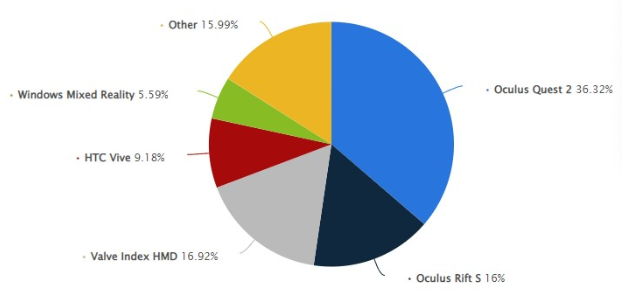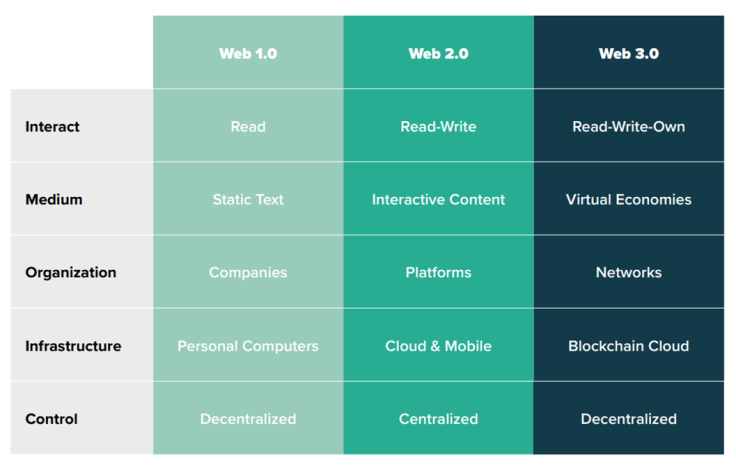Is The Idea Of Multiverse Possible In The Metaverse?
Escapism seems to be all the rage in the last couple of years, especially after lockdowns drastically changed the habits of billions of people. When the physical world becomes too uncertain, the online world is there to provide refuge.
However, based on the level of separation between those online experiences, we could be talking about different things. First, let's start from the beginning, the best place to start.
Meta vs. Metaverse
Mark Zuckerberg figured out the online escapism trend when he renamed Facebook to Meta last October. Not only did he commit an additional $10 billion to build virtual worlds, but he can also draw from his previous acquisition — Oculus VR — bought for $2 billion in 2014. Oculus headsets dominate the virtual reality market, at 52% market share as of November 2021.

As of February, Meta reported a rise of 10,000 virtual landscapes as a part of the Horizon Worlds metaverse.
It’s time. 10,000 worlds have already been created. Drop in and play, build or just hang out. The possibilities are endless. pic.twitter.com/VWc83PkuDV
— Horizon Worlds (@HorizonWorlds) February 16, 2022
Grayscale's metaverse report forecasts that the metaverse market will likely reach a $1 trillion market size during this decade. This is based on the global users involved in each online category, from blockchain platforms to centralized Web 2.0 platforms like Facebook (Meta).

At $117 billion in revenue for 2021, Meta obviously has the deepest pockets to make the metaverse happen, but is Zuckerberg's vision of the metaverse the only one. It would be a walled garden, centrally controlled and consisting of pre-approved assets for which creators have to pay a 47.5% fee.
Moreover, Meta abandoned its Diem stablecoin (former Libra) project. Instead, rumors are circulating about a virtual currency dubbed "Zuck Bucks" for its Horizon Worlds. However, it is very unlikely that it will be an organic cryptocurrency like Ethereum or Bitcoin. Meaning, a currency with a decentralized supply that depends on market forces of supply and demand.
More likely, it will be akin to V-Bucks (Fortnite) or Robux (Roblox). Therefore, an isolated digital asset tied to one's account. Altogether, Meta's metaverse is a quite different project from a Web 3.0
Decentralized Metaverse
Meta's metaverse is based on a centralized platform with centralized servers. As such, it represents Web 2.0 in which user control is removed, both in terms of content, data privacy and monetization. In contrast, Web 3.0 metaverse is built upon a network of blockchain networks.
Even if those networks have their own cryptocurrencies, they are exchangeable. This metaverse model creates a dynamic virtual economy that mirrors the one in the physical world.

Case in point, Yuga Labs, of Bored Apes Yacht Club (BAYC) fame, is building Otherside metaverse platform, underpinned by the ApeCoin (APE) token. Most of the maximally capped 1 billion tokens are already in the hands of the community, gradually unlocked in the next two years as projects go online and new partnerships are forged.

Not only will APE coins be used as utility tokens — for in-game/in-event activities — but they also serve as governance tokens. This means that the community itself has the final say on major proposals, platform upgrades and partnerships.
Speaking of which, this is the key feature of a decentralized metaverse. As long as other projects use compatible smart contract standards, such as ERC-20 or ERC-721 for NFTs, they can interface fully with Otherside. These can be CrypToadz, Cool Cats, World of Women and other NFT projects and blockchain games in which NFTs present player avatars.
Metaverse vs. Multiverse
However, what about similar decentralized metaverse platforms, such as The Sandbox (SAND) or Decentraland (MANA)? Can they all combine into a virtual, borderless landscape?
Not really, as each one has its own aesthetic and technology behind it. While the tokens themselves are exchangeable (APE, SAND, MANA), this is done by stepping outside the metaverse realm. Likewise, the in-game assets, tokenized as NFTs, are also available on their respective marketplaces, fitting only their visual styles.
This means that we are likely to end up with a multiverse system rather than a metaverse one, as depicted in the iconic "Ready Player One" movie. For example, the popularity of Otherside could draw minor projects from teams who don't have enough funding to start their own. After all, Yuga Labs received $450 million in VC funding to lift off.
A multiverse ecosystem would then start to look like a solar system:
- Decentralized Web 3.0 metaverse platforms as planets, some bigger than others
- At the center of the solar system, Meta would be the Web 2.0 sun with its effectively unlimited budget
For this reason, virtual economies would converge, but only analogous to real-world countries, instead of a coherent virtual economy within a single large nation. Likewise, in a multiverse, seamless transition between content is impossible, just like it would be to step from Fortnite into Halo Infinite.
Universe as a Multiverse of Metaverses
Zooming out further, we can view the solar system itself as a multiverse. One that consists of both decentralized Web 3.0 metaverse platforms and Web 2.0 isolated worlds. This translates to divided ownership of virtual assets, of which only Web 3.0 platforms provide a true path to ownership.
In other words, only Meta's metaverse could provide a unified experience. The cost is quite steep, though, as users don't truly own anything, neither the assets nor their own private data. In contrast, if we take Meta's walled garden out of the picture, we are left with blockchain-based Web 3.0 platforms.
Some may be cut off from each other, in terms of experiencing the content in a borderless fashion. However, because assets are tokenized and freely exchangeable, this creates a unifying foundation for a wider, more organic and equalizing ecosystem — a multiverse of metaverses.
Rahul owns less than 1 BTC and 40 LRC.
International Business Times holds no liability for any investments made based on the information provided on this page. We strongly recommend independent research and/or consultation with a qualified professional before making any investment decisions.

© Copyright IBTimes 2025. All rights reserved.






















